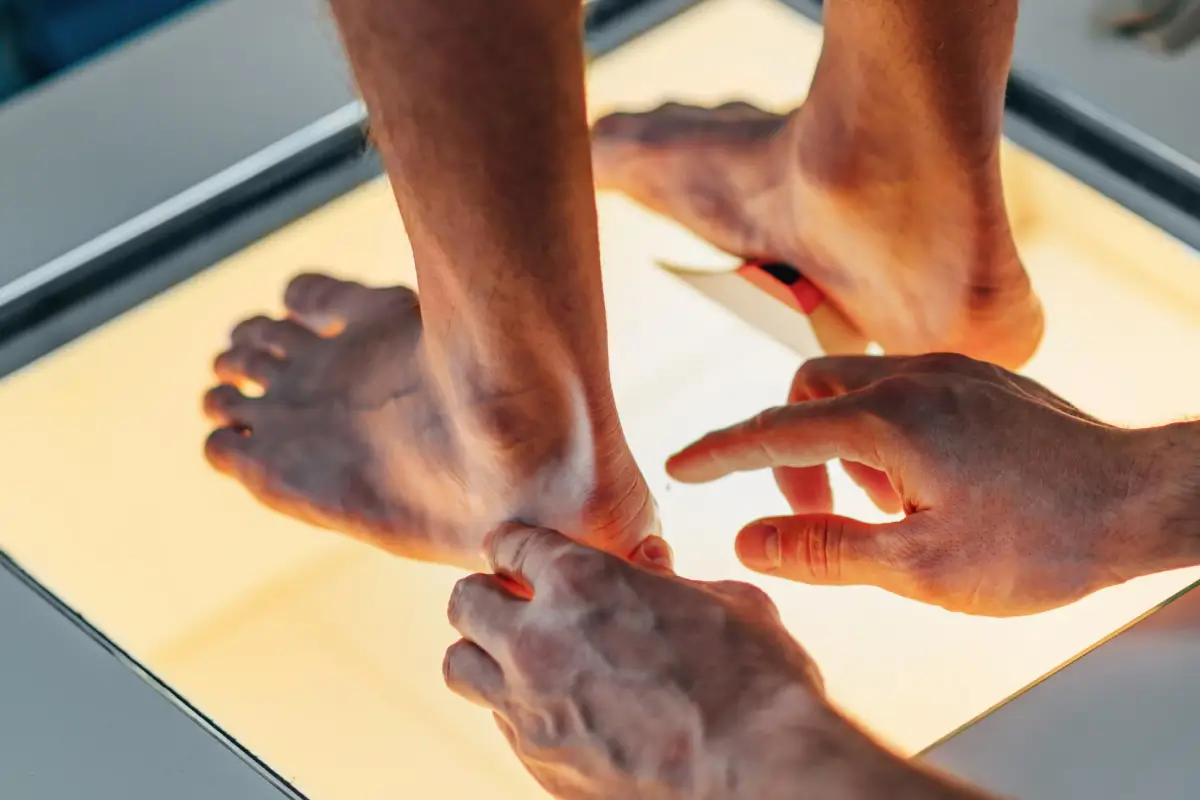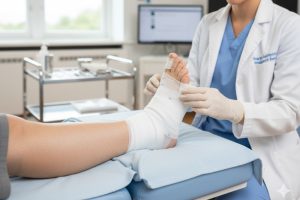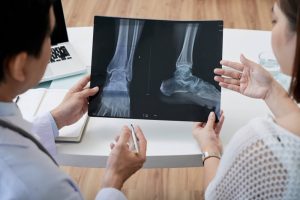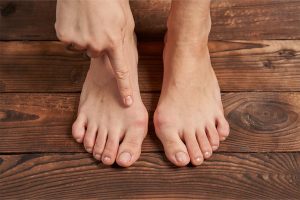If you have a painful bump near your big toe that makes shoes tight or walking uncomfortable, you may have a bunion. They start small but often grow and cause pain, swelling, or stiffness over time. At Foot & Ankle Specialty Centers, we help patients find relief through gentle and effective bunion treatments in Scottsdale so they can move comfortably again.
Understanding Bunions
These bony bumps form on the side of your big toe joint. They happen when the big toe leans toward the smaller toes and pushes the joint out of place. They can make walking or standing painful, and even finding comfortable shoes becomes a challenge. If you don’t get proper bunion treatments in Scottsdale, bunions can cause stiffness, balance problems, and even long-term joint damage.
Causes and Symptoms
Causes:
- Wearing shoes that are too tight or narrow
- High heels that push weight toward the toes
- Flat feet or low arches
- Arthritis or joint issues
- Family history of bunions or foot problems
Symptoms:
- A visible bump near the base of your big toe
- Pain, swelling, or redness around the joint
- Stiffness or limited movement in the big toe
- Corns or calluses where the toes rub together
- Trouble walking or fitting into shoes comfortably
Diagnosis
Before we start our bunion treatments in Scottsdale, we check your foot and the movement of your big toe. We ask you about your pain level and the shoes you wear. Sometimes we take X-rays to see how much the joint has shifted. Once finished, our foot pain specialists in Scottsdale recommend the right treatment, whether surgical or non-surgical, for you.

How are Bunions Treated?
- Wearing shoes with a wider toe space to reduce pressure
- Using bunion pads or cushions to protect the bump
- Applying ice to ease swelling and pain
- Taking pain medicine or anti-inflammatory medication
- Wearing custom orthotic inserts for better support and alignment
- Doing gentle foot and toe stretches to keep flexibility
- Using splints or toe spacers to improve alignment
- Surgery to straighten the toe and remove the bump if other methods don’t help
Our goal with bunion treatments in Scottsdale is to find the simplest and most effective way to make walking pain-free again.
Prevention
To reduce the need for Phoenix bunion treatments, you can lower your risk of getting bunions by wearing shoes that fit well and give your toes enough space to move. Avoid tight or high-heeled shoes, stretch your feet regularly, and use inserts if you have flat feet. Paying attention to early signs like redness or soreness can help you stop bunions from getting worse.
Best Podiatrists for Bunion Treatments in Scottsdale
If your foot hurts or you notice your big toe leaning inward, don’t wait until walking becomes painful. The caring team at Foot & Ankle Specialty Centers can check what’s going on and create a simple plan for your bunions. Contact us early and make that big difference in how your feet feel every day.
FAQs
What happens if your bunions go untreated?
Untreated bunions often get bigger and more painful. They can make walking difficult and cause joint stiffness or deformity.
How much is the cost of bunion treatments in Scottsdale, AZ?
The cost depends on how severe your bunion is and what kind of treatment you need. Your podiatrist will explain your options clearly.
How much does bunion surgery cost in Arizona?
Bunion surgery in Arizona can cost a couple of thousand USD, depending on the procedure and your insurance coverage.
Who is a good candidate for minimally invasive bunion surgery?
People with moderate bunions, good bone health, and no major joint damage are often good candidates for minimally invasive surgery.
Related Blogs

Bunion Surgery Cost in Phoenix, AZ
A bunion is a hard bump that forms near the big toe. It often causes pain and makes it hard to walk. Many people try different

What Are the Different Types of Bunion Surgery?
Bunions cause pain, swelling, and changes in how your foot looks. When other treatments do not work, surgery becomes the best option. Many people feel confused

What is the Difference between a Bunion and Hallux Valgus?
A bump forming near your big toe might mean your toe is starting to lean in toward the others. It might hurt when you walk or
